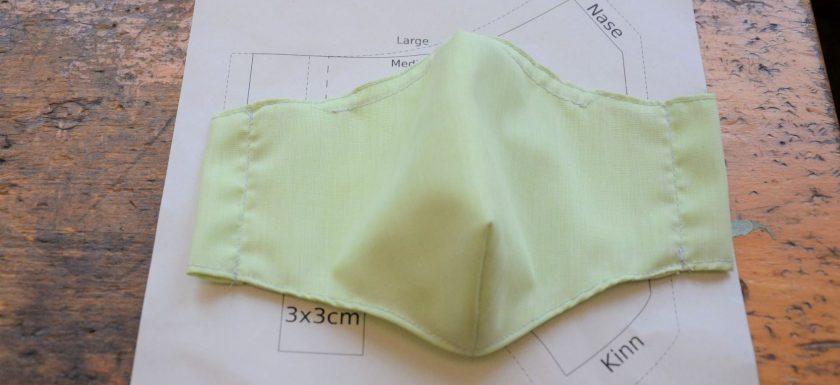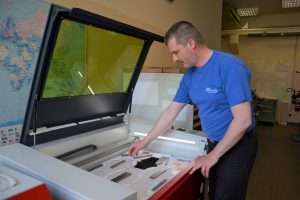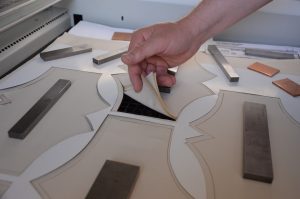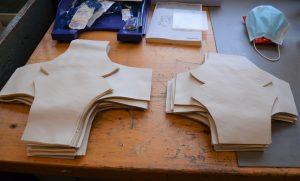
Inés is a mechatronics technician at BESSY II. In March she started to produce face masks with some of her colleagues in order to donate them to social institutions. The project masken.berlin has since then produced more than 1600 self-sewn masks.
A few weeks ago the situation was quite different: In mid-March, the number of infections in Berlin rose daily in the triple digits, shops and schools were closed down, the newspapers were full of reports that doctors’ surgeries, hospitals and social institutions were lacking protective equipment of all kinds. Practically, not even a simple cloth mouth and nose protector could be found anywhere.
Do not wait at home and hope for better times
In this situation, Inés knew that she did not want to just sit still at home and wait. The mechatronics technician works in the diagnostics group of the BESSY II accelerator team, where she developed, among other things, a measurement program for evaluating beam parameters in the control room. But when HZB declared minimum operation in mid-March, Inés was also ready to go to her home office. “The situation back then was quite threatening and uncertain. Together with some people from our neighbourhood, we therefore wanted to support the people who were exposed to the risk of contracting the corona virus on a daily basis at the front,” says Inés. She is on the organising team of the xHain hack + makespace initiative, a place where creative people, tinkerers and technicians meet in open workshops and work together on ideas and projects.
Together, the members of the xHain decided to sew their own makeshift masks and donate them to social institutions. In the beginning they started improvising, cut masks out of bed linen and sewed them. Making a mask took quite a long time. “The first two to three weeks were extremely exhausting, we had to get everything up and running. In the meantime, we have built a real production line for making the masks”, she says. This means that the up to 20 volunteers can now sew them in large quantities.
It’s faster with the laser cutter
Instead of bed linen and other fabric remnants, the sewers now only use fabric bales. They no longer cut by hand either, because that simply took too long. Instead, the mask shape is cut out with a laser cutter. This is particularly efficient because you can cut ten layers of fabric at once with precision. Help got the project from the HZB workshop in Wannsee. Jesko and Henning from the workshop agreed to cut out the mask shape on the laser cutter available there, so that the work of the sewers is much faster. The project has now been able to produce more than 1600 masks and donate them to people in need.



But the situation has changed in recent weeks, says Inés. Since people have to wear a mouth and nose protector in shops and public places, commercial mask production has been set up. In contrast to early March, makeshift masks can be bought now on every corner in Berlin. “Although regional demand is decreasing, we are still producing.” Some packages went to Brazil, for example, where the corona virus is currently spreading and simple masks are still in short supply.
Production still running until donations are exhausted
But as a small initiative, the logistical organisation effort is very high. There is also a lack of funds to continue buying fabrics. “Unfortunately, the donations have been used up, so we can only use up the existing bales of fabric,” says Inés. The volunteers who have been working tirelessly for the project in the last few weeks also need a little breather.
But Inés definitely wants to continue: “As soon as we have new funds, we want to start again. The demand all over the world is enormous”. She also wants to establish contacts with aid organisations in order to better distribute the masks locally.
“We have built up a well thought-out mask production, so it would simply be too bad to stop. Especially because our masks benefit the people in the world who urgently need them and who cannot afford to buy any.”
Inés
The project is financed 100 percent by donations. If you want to support the initiative, you can find more information here.
